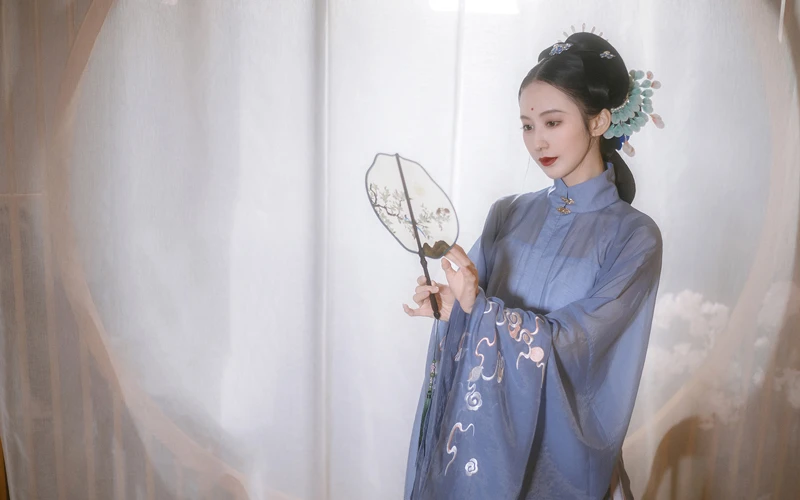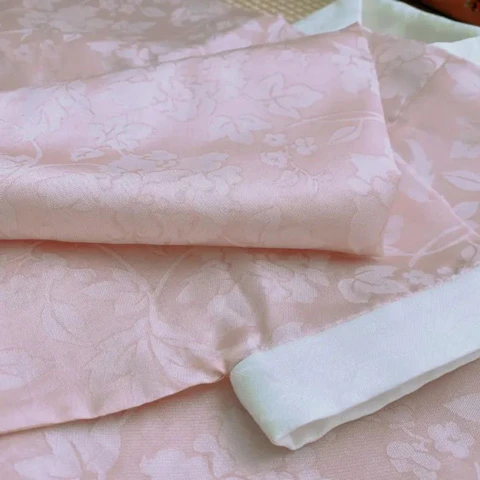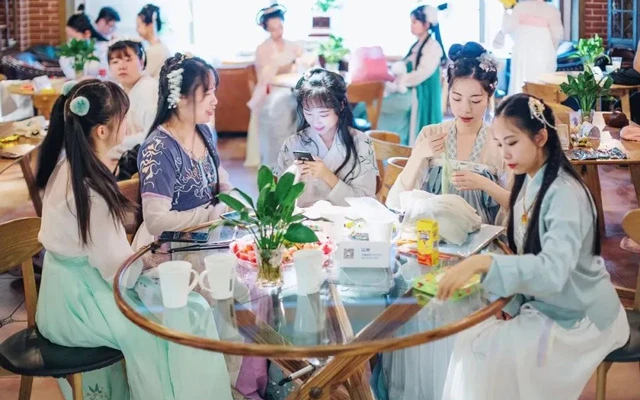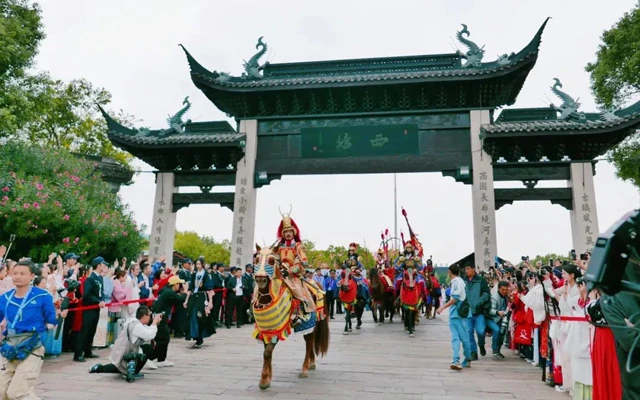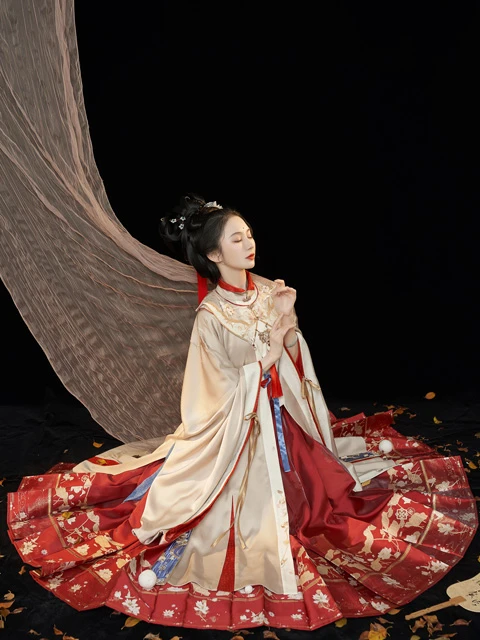In the annals of the internet's memory, Hanfu made its debut in the public eye in 2003 when a power worker strolled through the streets of Zhengzhou clad in Hanfu, sparking widespread intrigue. Back then, donning Hanfu in public would undoubtedly invite curious gazes and discussions from passersby. However, times have indeed changed.
Nowadays, it is no longer a novelty to encounter boys and girls in Hanfu on the streets, let alone in the online, where exquisite Hanfu photoshoots, vintage makeup tutorials, and hairstyling guides are readily available. There is also a plethora of gatherings for Hanfu enthusiasts. While participation is easily accessible, delving deeper into the subject may surprise many, as Hanfu is far more than just a visually appealing garment. In this article, author Acheng (TOPYS) will share his perspective about hanfu.
The Hanfu community has long been subjected to ridicule and prejudice, with many still holding the belief that most Hanfu enthusiasts are merely superficial admirers of beautiful clothing. Throughout history, Hanfu has been intricately intertwined with the development of Chinese culture, spanning numerous historical epochs and reflecting distinct characteristics alongside the evolution of societal ideologies and aesthetic standards.
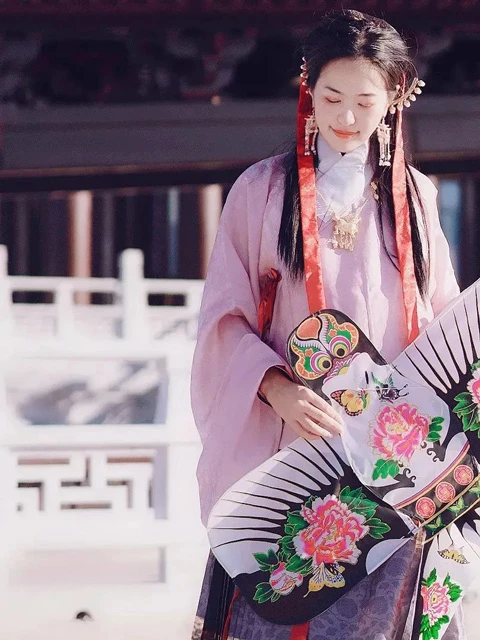
Dongjin Shangyu
Dongjin Shangyu has been immersed in the world of Hanfu for over a decade, serving as the president of the Hanfu Association in Wenzhou (China's first non-profit social organization named after "Hanfu") and a lifestyle blogger. She views Hanfu as a medium that connects the historical evolution of attire from the Yellow Emperor to the early Qing dynasties, akin to a string of pearls.
Genuine enthusiasts of Hanfu often seek to enhance their knowledge by exploring the contextual changes in clothing styles in conjunction with the political, economic, cultural, geographical, and climatic factors of the era, thus interpreting history through the lens of fashion. Whether organizing events, engaging in handicrafts, or promoting the integration of intangible cultural heritage, Hanfu serves as a significant medium for them. True devotees are willing to hone their skills, engage in profound learning, and use Hanfu as a means to shape their identities. For these individuals, Hanfu undeniably opens the door to a new world, leading to a more vibrant and fulfilling life journey.
For contemporary youth, should they suddenly develop an interest in Hanfu, a wealth of information is readily available online, offering ample opportunities to connect with like-minded individuals and swiftly become part of the community. The influx of curious individuals has led to rapid expansion of the community; however, the low entry barriers have also resulted in a mixed bag of participants within the Hanfu circle. As the saying goes, where there are people, there is a community, and in recent years, Hanfu has not been immune to controversies stemming from the diverse "rules" and conflicts within the community.
Several Hanfu enthusiasts independently described their relationship with themselves and the Hanfu community as being both "in and out" - not confined solely to the circle but eager to engage with a diverse range of individuals who share a passion for Hanfu culture, exchanging insights on attire and cultural appreciation. This mutual understanding is partly a response to the inherent complexity of the community.
This kind of contradiction not only exists in the Hanfu culture, but also in various aspects of cultural and daily life. Traditional Chinese culture has experienced a rupture, not evolving naturally from ancient times to the present, but relying on "revival." Due to this rupture, these distant traditional cultures appear awkward. Indeed, some people adhere to conventions, carefully guarding tradition without truly understanding it, merely imitating rigidly and ignoring the needs of reality. On the other hand, some individuals indulge themselves, especially in cases of lacking aesthetic education, occasionally giving rise to peculiar creations.
In the fifth episode of the second season of the documentary series "THE GREAT SHOKUNIN," Lin Chi-ling's narration states: "Hanfu, instead of staying in the old clothes of the previous dynasty, is the formal dress of the times along the tradition." Dongjin Shangyu interprets this statement excellently. Although she always incorporates Hanfu into her daily wear, she adeptly combines Hanfu with various modern clothing, displaying a more open attitude towards Han elements, Han-Western fusion and fairy attire are expressions of cultural differences, enriching the modern style of Hanfu attire and promoting the multi-dimensional 'breaking out' of Hanfu.
This, in the developmental stage of Hanfu, is actually a colorful and dynamic cultural collision. Han elements are considered as newly derived Hanfu in modern scenes. We are in a diverse era, constantly exchanging and drawing inspiration from different cultural factors. Whether these well-designed Han elements can be integrated into the modern Hanfu system depends on future evaluations. She indeed dislikes the use of lower-quality fabrics to cater to the exaggerated preferences of the masses in fairy attire, but does not oppose the existence of richer elements on the correct foundation.
Dongjin Shangyu previously published a magazine called "Hanfu Shidai," where they boldly envisioned 'Chinese modern life,' adhering to a Chinese style and development pattern in all aspects of life, maintaining traditional Chinese etiquette. Hanfu is a part of multicultural development. It needs to have its own place in a multicultural environment and needs to integrate more and draw on strengths from others.
The "Hanfu Consumption Insight Report" also provides an exciting data point for fellow enthusiasts. Currently, the number of purchased users of Hanfu in China has reached 18 million, with a staggering potential user base of 415 million. This data gives us reason to believe in the potential of spreading Hanfu culture and increases our confidence in bridging cultural ruptures one day. However, the Hanfu community may need more inclusivity, rather than people immersing themselves solely in an imagined world, engaging in endless disputes. We need more individuals genuinely willing to promote Hanfu culture to revitalize it in the modern era.
In my view, the traditional culture in many people's minds has gradually been mythicized in a distant void, becoming a brilliant fantasy. In reality, it should be part of everyday life, for the common people, embodying a vague sense of connection to the five thousand years of heritage on this land. The Hanfu we yearn for should be integrated into daily life, naturally exuding vitality and charm like popular clothing.
